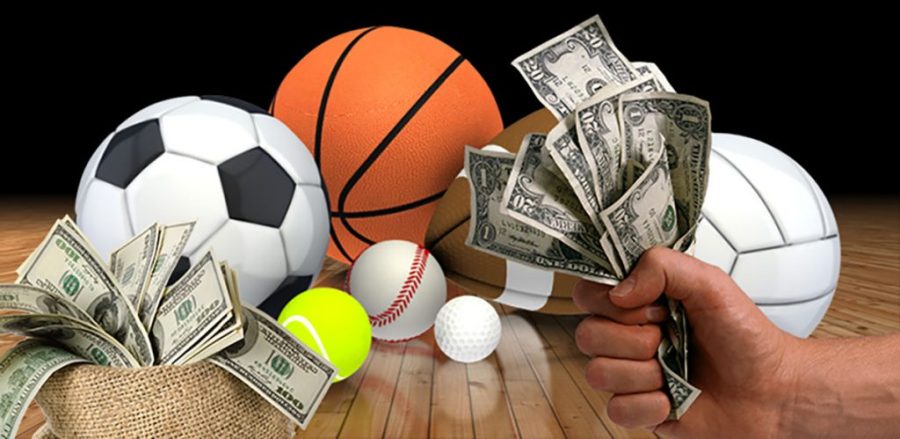Sports and money, can they coexist?

More stories from Olivia Oorbeck
Athleticism has always been a way for people of many different cultures and backgrounds to come together in unity. Unity can look like staying up late to watch the MLB (Major League Baseball) World Series or running back into the room for the NFL (National Football League) Super Bowl Halftime Show. There is something in athletics that brings people together to enjoy, agree upon, or at least give opposing fans something to talk about. Sports themselves can be very different, especially baseball and football, however many of them have one thing in common: viewership.
Viewership has always been an essential part of sports. It has allowed sports to have an audience outside of its players and their families. Viewership often creates a sense of community. However, over the years, sports viewership has been used to increase profit. Teams and managers have been increasingly taking advantage of their fans and that community in order to turn it into a form of profit. Many mainstream sports today have different sponsors as well as relying on income from viewers to fund the team, including uniforms, salaries, equipment, coaching, and even facilities. Even though some could say that is positive, there are a variety of factors that can be seen as negative.
Popular sports like men’s football, baseball, and basketball often get the majority of attention from viewers. Other, less popular sports can be overlooked and often forgotten. For example, many broadcast stations and news channels look for a thing that can bring in the most amount viewers, and often these are the mainstream sports(especially men’s sports). Unfortunately, a numerous amount of fans can cause a team to shift the focus from the game to profit. A priority shift from the sport itself to the money that can be made off the fans is one of the reasons tickets for sporting events and fan gear have risen to such extremes, in turn eliminating some of the fan bases that cannot afford a ticket. Managers, owners, and sponsors of teams can be so focused on success and making money, that they do not prioritize athletes’ needs. They focus on what can be made off of one jersey or how much people are willing to spend on one ticket to a certain game, rather than the camaraderie that is found through sports.
Greed not only affects fans and viewers but, it also affects athletes as well. Although some athletes make an enormous amount of money, the majority are not paid well, considering their short careers and lifelong injuries. The athletes who have put in countless hours trying to master their sport only to end up having to quit due to injuries can be devastated, and this fear can leave athletes without any income to fend for themselves.
Another group that is overlooked and underpaid is females. Throughout the world, female sports have not been widely accepted like mainstream male sports. Women work as hard and sacrifice as much as male athletes; however, they are underpaid in comparison to their male counterparts. Often the reason given is because male sports bring in more revenue. Unfortunately, this social norm dictates what sports are watched, funded, and successful.
Recently, there has been a lot of change in women’s sports. More and more people want to see diversity in the sports they are watching, which has led to more funding and equality between the different sports. However, women’s sports are still underfunded and less watched. This fact reminds us how much work we still need to do before we will see everyone in sports equally represented and funded. Our goals as viewers will change the current priorities as well as the diversity in sports. That is why we will not see complete change until people refuse to be used for profit. When we as fans recognize that the sports we love are only a tool that others use to gain power and money, will anything truly change? Otherwise, some will find a way to use sports to benefit themselves rather than bring communities together.

Olivia Oorbeck is a senior on the FHC Sports Report. She is excited about entering her second and final year on the staff. This year, she received the...



